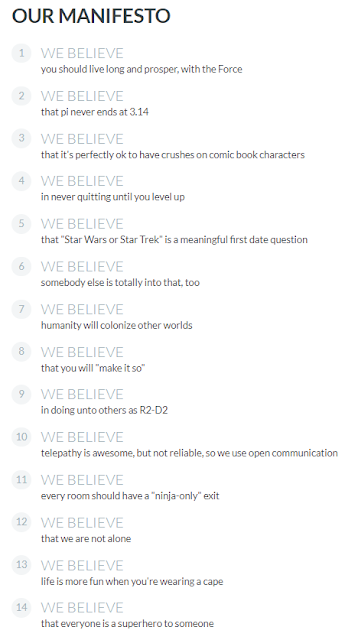Web Measures: Clickthrough Rate
Clickthrough Rate
Clickthrough Rate (CTR) is thrown around a lot in the world
of analytics – but what does it mean and why is it important? The clickthrough rate
is the ratio of consumers who see content and click it, hence ‘clickthrough’.
CTR is important to digital marketers because it’s a concrete way of measuring
how effective a brand’s content is performing. (Google, 2018). The CTR is found
by dividing the number of clickthrough’s by the number of views (Kaushik,
2018).
Measuring and analyzing clickthrough rate may seem like an
easy task, but there’s more to it than it seems. The CTR is the perfect metric
to measure ad text and descriptions; consumers clickthrough because the content
is engaging. If the clickthrough rate is low, there are other factors that
could be involved and should be investigated. The problem could be the text and
descriptions don’t match the content the consumer is taken to or there could be
a broken link. Conclusions shouldn’t be drawn until all factors are evaluated
for this very reason (BigCommerce Pty. Ltd, 2018).
CTR, Whirlpool, and My
Perspectives
In 2014, Whirlpool implemented an email campaign and
increased it’s clickthrough rate by 42%. The main goal of the campaign was to
increase the number of consumers clicks from emails through A/B tests. By
testing email subject lines, segmenting consumers, and optimizing landing
pages, Whirlpool was able to achieve its goal and start with its marketing change.
From analyzing results from the emails, Whirlpool identified the factors that
played into consumer clickthroughs. Taking over half the original email content
out of the emails, giving consumers fewer options to click, and better defining
segmented markets assisted in a higher clickthrough rate (MarketingSherpa, LLC,
2018).
By setting a goal of increasing a clickthrough rate, a brand
is setting a goal for itself to improve the content it’s giving consumers. The brand
wants to refine the content to better suit the message and ultimately the call to
action (clicking through the email). To do this, the brand should look at what is
working/not working now and go from there. What isn’t working should be the focus
of changes. In the case of Whirlpool, there was too much text in the emails, the
consumers had too many options to click on in the email text, and the email subjects
didn’t clearly fit the content. After testing the changes to those key factors,
Whirlpool was able to identify what wasn’t working by the success of what did work
and move on from there.
References
BigCommerce Pty. Ltd. (2018). What is CTR? Defining click
through rate for online businesses. Big
Commerce. Retrieved from https://www.bigcommerce.com/ecommerce-answers/what-is-ctr-defining-click-through-rate-for-online-businesses/
Google (2018). Clickthrough rate (CTR): definition. AdWords Help. Retrieved from https://support.google.com/adwords/answer/2615875?hl=en
Kaushik, A. (2018). Web analytics standards: 26 new metrics
definitions. Retrieved from https://www.kaushik.net/avinash/web-analytics-standards-26-new-metrics-definitions/
MarketingSherpa, LLC (2018). Email marketing: Whirlpool
lifts clickthrough rate 42%, creates testing culture. MarketingsSherpa. Retrieved from https://www.marketingsherpa.com/article/case-study/whirlpool-lift-clickthrough-testing-culture


Comments
Post a Comment